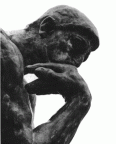Active measures - Wikipedia, the free encyclopedia
Active Measures (Russian: Активные мероприятия) were a form of political warfare conducted by the Soviet security services (Cheka, OGPU, NKVD, KGB) to influence the course of world events, "in addition to collecting intelligence and producing politically correct assessment of it".[1] Active measures ranged "from media manipulations to special actions involving various degree of violence". They were used both abroad and domestically. They included disinformation, propaganda, counterfeiting official documents, assassinations, and political repression, such as penetration of churches, and persecution of political dissidents.[1]
Active measures included the establishment and support of international front organizations (e.g. the World Peace Council); foreign communist, socialist and opposition parties; wars of national liberation in the Third World; and underground, revolutionary, insurgency, criminal, and terrorist groups.[1] The intelligence agencies of Eastern Bloc and other communist states also contributed in the past to the program, providing operatives and intelligence for assassinations and other types of covert operations.[1]
Retired KGB Maj. Gen. Oleg Kalugin described active measures as "the heart and soul of Soviet intelligence": "Not intelligence collection, but subversion: active measures to weaken the West, to drive wedges in the Western community alliances of all sorts, particularly NATO, to sow discord among allies, to weaken the United States in the eyes of the people of Europe, Asia, Africa, Latin America, and thus to prepare ground in case the war really occurs."[2]
Active measures was a system of special courses taught in the Andropov Institute of KGB situated at SVR headquarters in Yasenevo, near Moscow. The head of "active measures department" was Yuri Modin, former controller of the Cambridge Five spy ring.[1]
Communist War Plan - Sun Tzu Strategy
14 years ago




